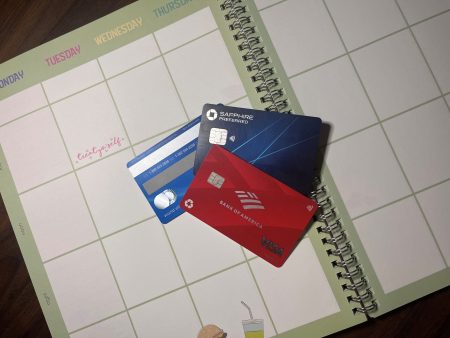MoMo Productions/Getty Images; Illustration by Austin Courregé/Bankrate
You don’t have to look far to find predictions for the future of interest rates. While it’s wise to keep an eye on whether experts believe that rates are poised to rise or fall — the movements can play a big role in how much it costs to buy a home or a car — there are some decisions you can feel confident in making without worrying about where rates are heading next. Opening a long-term CD is one of those choices: Locking in a rate for the next three, five and maybe even 10 years, can offer some valuable benefits.
5 reasons why it’s a good time to consider a longer-term CD
1. You want protection against rate uncertainty
Traditional CDs let you lock in the rate for the entire term. So, while money in a savings account is subject to rate movements — if they fall, your earning potential falls, too — funds in a CD will give you a guaranteed return. You’ll know exactly how much you’ll have when it reaches maturity.
2. You have funds you won’t need for an extended period of time
If you’ve identified funds that you won’t need in the near term, moving them from a variable-rate savings account to a long-term CD could provide several advantages:
- Potentially higher yields than savings accounts
- Protection against future rate decreases
- Guaranteed returns for planning purposes
- Reduced temptation to spend the funds
That last upside can be especially valuable. CDs have early withdrawal penalties, which can act as a barrier and help you recognize the need to leave that money untouched.
Keep your emergency savings elsewhere
When setting up an emergency fund, focus on liquidity over yield. Stash your cash in a high-yield savings account instead of a CD that offers a higher APY. In a savings account, you can withdraw the funds as needed, but in a CD you’ll likely have to pay an early withdrawal penalty if you take the money out before the end of its term.
See more: High-yield savings account vs. CD: Which should you choose?
3. You can overcome worries about inflation
Inflation has historically averaged around 2% — meaning that the overall cost of goods and services increases each year by that much. If your money is in a savings account that pays less than that, you’re losing your purchasing power. Historical data shows that CDs yielding 3% or more have often helped preserve purchasing power over time.
One important caveat here, though: In recent years, inflation has paced ahead of 2%, which means you need to shop around for the highest rate on a long-term CD to increase your odds of staying ahead of those rising costs.
4. You can incorporate long-term CDs into a smart CD ladder strategy
Remember the adage that you don’t have to put all your eggs in one basket? The same applies for funds in a CD. Instead of putting all your money in one long-term CD, a CD ladder can help you maximize returns while maintaining flexibility. For example, you can lock in the best rates available on a 3-year CD and a 5-year CD while keeping a chunk of money in a 1-year CD that you’ll be able to access earlier if you need it.
5. You’re retired, or about to retire
If you’re already retired — or retiring in the near future — you may want to consider a CD and lock in a rate now. That way, you can potentially be ahead of long-term inflation, earn a guaranteed income stream and reduce risk in your overall portfolio.
Long-term CDs can make your financial life a bit less stressful
Trying to decide where to find the best potential return can create a lot of headaches. You might be shuffling money around constantly, chasing new investments, worrying if they aren’t performing and then chasing the next best option. A long-term CD adds a set-it-and-forget-it piece to your investing strategy that can help you plan for your lifestyle based on an exact rate of return.
Choosing the right CD term
The major decision to make in selecting the best CD for your financial needs is to determine your time horizon for the money you’re putting into the CD. If, for example, you’re planning to buy a home within three years, putting your savings in a five-year CD won’t be the right choice because you’ll likely incur a hefty early withdrawal penalty that could cost you the entire interest accrued.
Even if the five-year CD has a higher yield, it’s smart to prioritize the term that’s right for you instead of focusing on the APY. Once you’ve determined the proper term, it’ll be easier to find the ideal CD for your needs.
Bankrate’s tips when selecting the right CD for your needs
1. Decide the proper term length.
2. Choose the right type of CD — there are 12 types!
3. Shop for the best rates with Bankrate’s Best CD Rates guide.
4. Check for early withdrawal penalties.
5. Select CDs offered at federally insured banks and/or credit unions.
Bottom line
There’s no way of knowing what interest rates will do next month or next year. However, a long-term CD can give you the assurance of knowing exactly what your rate will be until that CD reaches maturity. Once you open it, that rate is locked in, giving you the ability to use a CD calculator to determine your return and build your future budget.
Why we ask for feedback
Your feedback helps us improve our content and services. It takes less than a minute to
complete.
Your responses are anonymous and will only be used for improving our website.
Help us improve our content
Read the full article here












